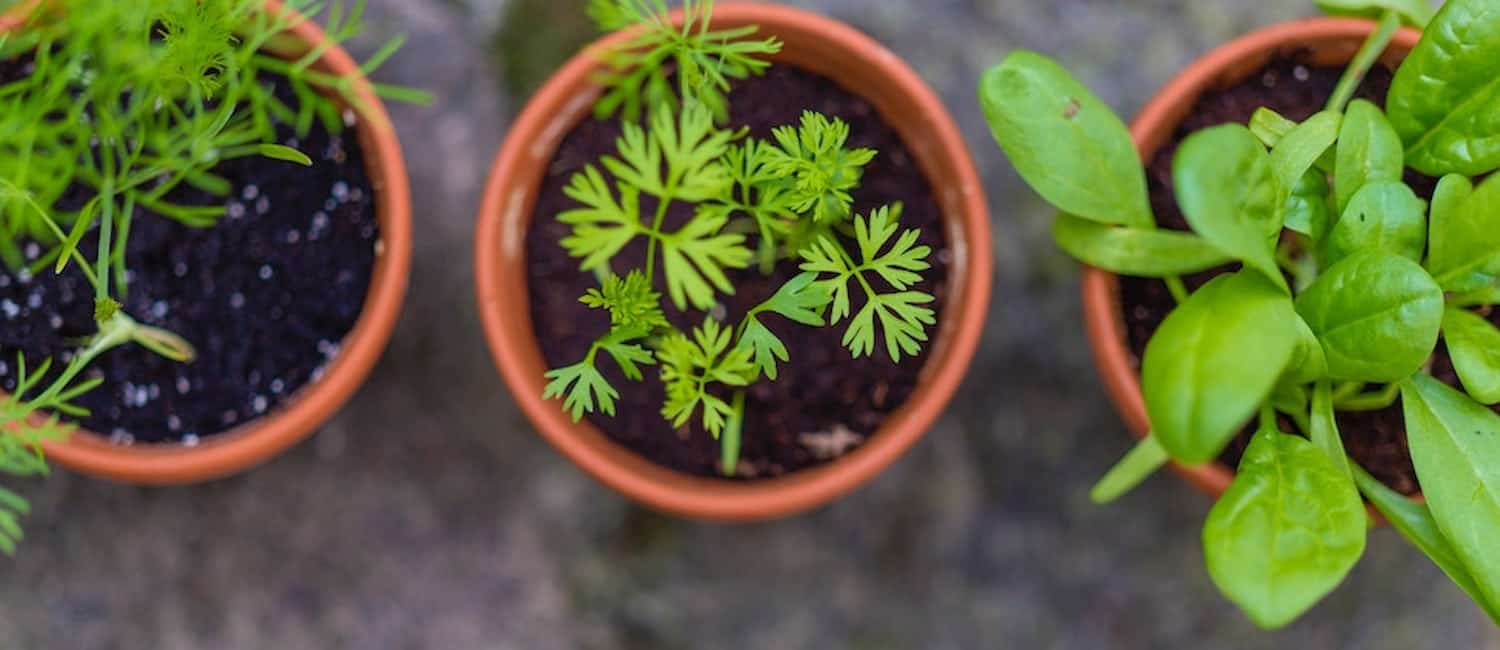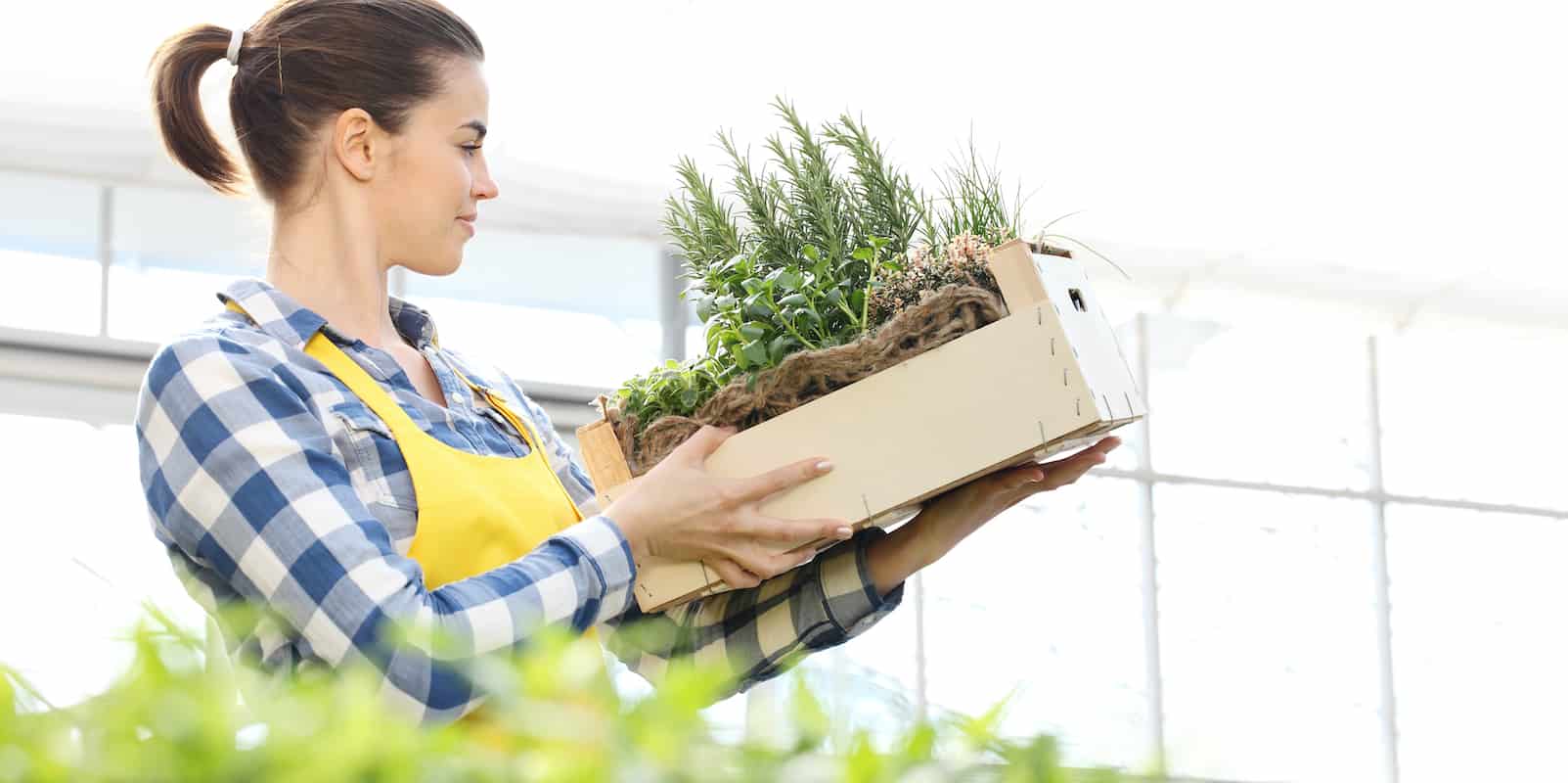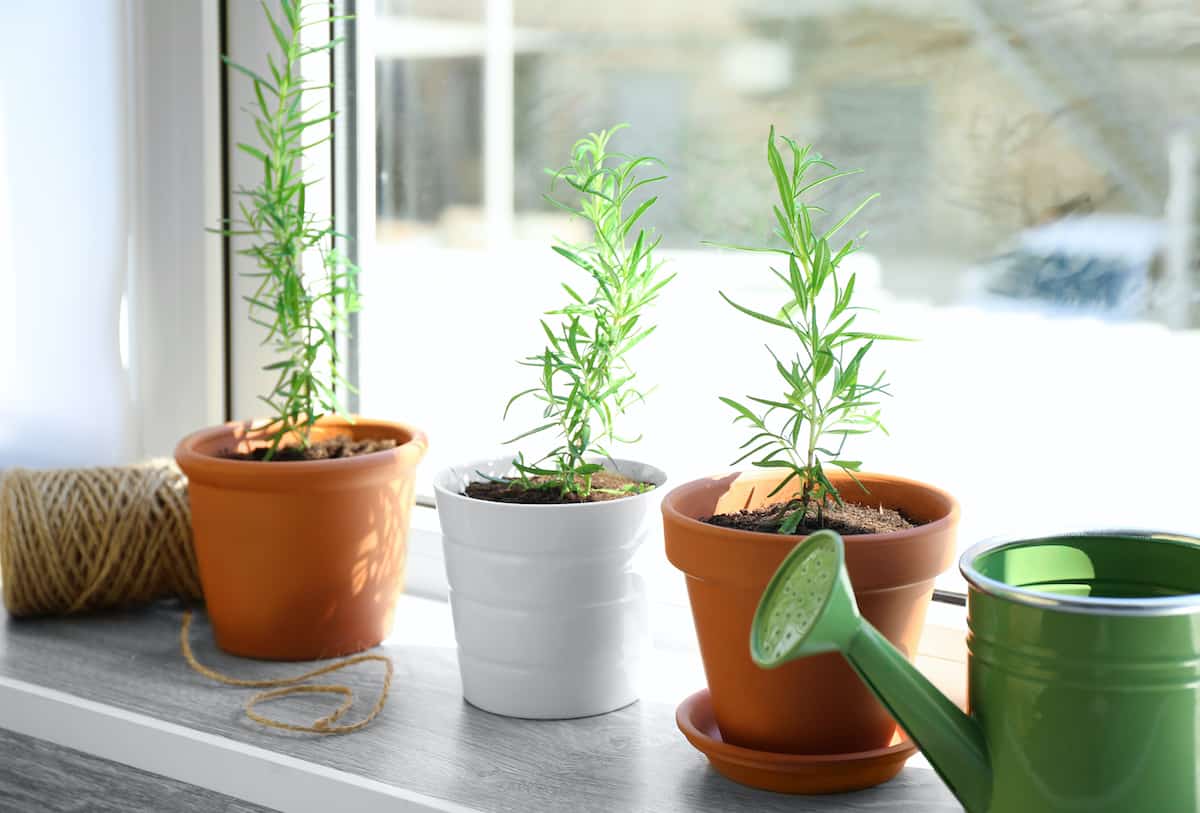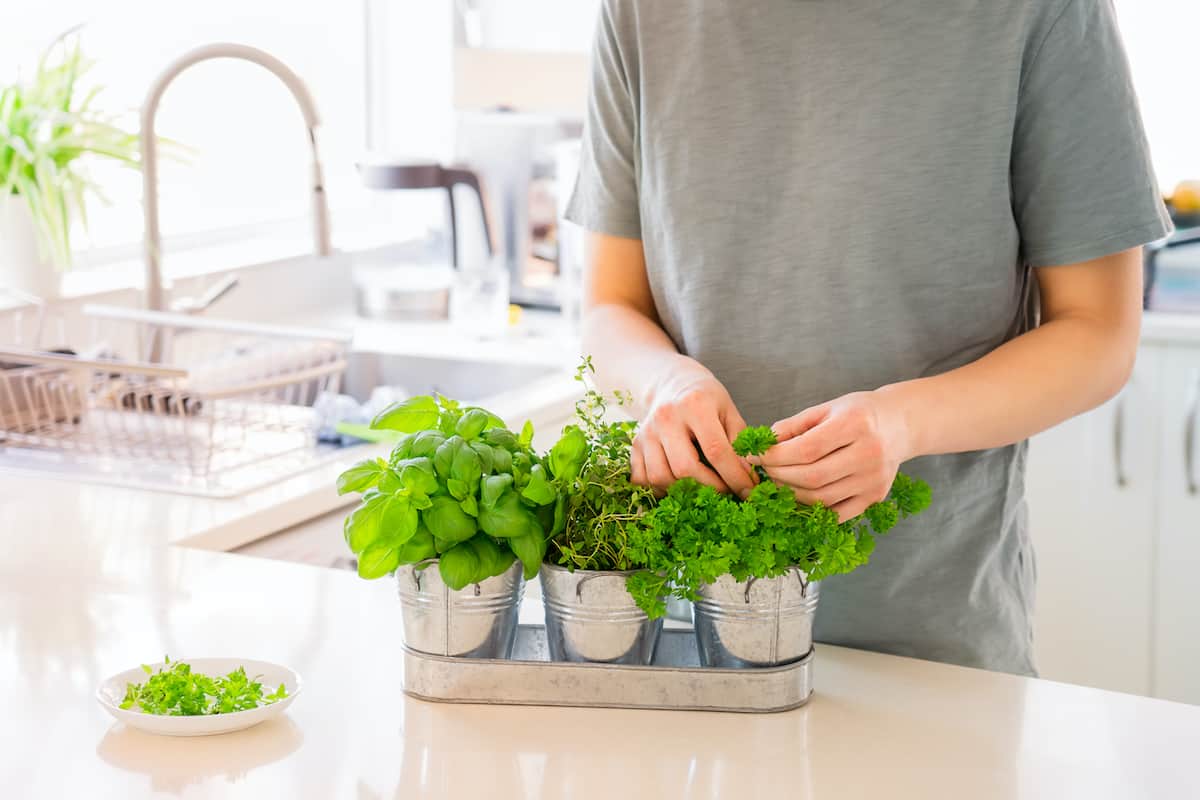
The benefits of an indoor spice garden
There really are no cons to having your own indoor spice garden. However, the pros are numerous and convincing:
Money savings
Dried herbs and spices are awfully pricy for such small bottles. Five bucks for a tiny jar of tarragon that you'll probably never fully use? Ridiculous!
By comparison, the supplies necessary for creating and maintaining a DIY herb garden are minimal, since it's pretty much just young plants, possibly seeds and dirt and grow lights if you're feeling really adventurous.
Fresher ingredients
You don't have to be the second coming of Wolfgang Puck to appreciate fresh cooking ingredients. Your dishes will be full of extra flavor, plus you won't have to wonder where that cilantro has already been or who has previously handled it!

A dash of natural beauty
A bit of extra greenery brightens up any home, especially apartments where space for plants and indoor trees is typically limited. A window sill full of herbs and spices is sure to add extra natural beauty to your space. Then, of course, there's the benefit of delicious herb-related aromas!
Personal pride
If you've never flexed your green thumb before, a DIY herb garden is a perfect way to learn the basic ropes of gardening. There's no feeling quite like seeing those first shoots peek through the dirt, so give it a try, then pat yourself on the back when everything comes up roses (so to speak!)
Steps to growing herbs indoors
Compared to an outdoor green space, an indoor spice garden is much less difficult. Still, there are decisions to make and steps to follow to achieve success!
Step 1: Pick a location (or two!)

As all plants require at least some sunlight to grow, identify the window spaces that have the best light for the herbs you're growing. South-facing windows offer the most sunlight during the winter, so those are the best choice for plants that grow best in tropical climates, such as thyme, basil, oregano, rosemary and bay laurel. However, herbs like mint, chives, chervil and parsley don't require such heavy light, so nurture those near east or west-facing windows.
If you want to get really fancy try setting up grow lights for best results, especially when growing from seeds. Then, it won't really matter where the plants are!
Step 2: Purchase plants or plant seeds

Purchase plants any time of year! Pick up a few from the local nursery and consider buying more attractive containers than those plain, black plastic ones they come in. Think farmhouse chic, a la Joanna Gaines!
If planting from seed, start in spring. Buy the seeds you want, as well as a bag of seed starting potting mix. This is very important because heavier types of potting soil aren't good for helping the germination process.
Some people opt to start the seed-planting process in plastic trays that have a lot of individual cells. Then, transplant the sprouts into clay pots. But you can really do either! Whichever container type you select, place the newly seeded containers out of direct sunlight in a warm room. Use clear plastic to cover them until germination happens, then take the plastic off and place it in sunlight or under grow lights (preferably the latter).
Step 3: Water and fertilize

Water is another essential ingredient to herb garden success. Be careful not to add too much of a good thing, however. Do not allow the soil to get very wet. Instead, water lightly using a watering can or sprayer to keep the soil slightly moist.
Frequency of watering really depends on how quickly your plants dry out. The amount of sunlight and temperature inside the apartment affects this. Do a fingertip test to make sure each plant really needs watering before you do it.
Starting a week or so after germination, use a liquid houseplant fertilizer a couple of times a month. Follow directions accordingly.
Step 4: Harvest

Don't cut into that brand new plant right away! Instead, wait to start snipping until the plant is at least four to six inches tall.
To harvest, cut the outside leaves first. Use kitchen scissors or shears that are both clean and sharp. This will help the plant heal more quickly. Take care not to cut more than one-third of the plant at any given time, so that it can grow and mature at a good, strong pace.
If the plant starts to flower be sure to pinch the buds off, or else it will change from a producing plant to one that is more interested in reproduction.
Step 5: Enjoy!

Your enjoyment of these herbs is only limited by your imagination! Top your favorite dishes with fresh green onion or cilantro, or cook with sage or thyme for extra flavor. Some even go well as cocktail garnishes (mint)!
The best herbs to grow in your indoor spice garden
The great thing about growing your own herb garden is that you don't have to plant anything that doesn't suit your palate. Not a fan of cilantro? Don't even bother! Put basil on everything? Plant extra!
Certain herbs are extra popular in DIY gardens. When you're planning your garden, consider these versatile cooking herbs:
- Lemongrass: Fans of Asian cuisine should definitely plant this easy to grow herb.
- Parsley: This one is tricky to grow from seed, so perhaps start off with a plant, instead. Never transplant parsley from one container to another!
- Rosemary: A must for soups and stews, this aromatic herb grows best in full sun.
- Mint: One of the easiest to grow, mint is a great addition to just about any type of recipe.
- Chives: Another on the cinch list, chives grow quickly and with little help. They make a wonderful and tasty garnish atop many dishes!
- Basil: A little trickier than some herbs to grow, basil is well worth the extra effort.
Watch your spice garden grow
With a little effort and TLC, an herb garden is just the thing to spice up your home and cooking. Try your hand at a variety and note what works and what doesn't. As with any gardening, growing herbs indoors takes time to learn and perfect. Keep at it and before you know it you and your guests will be enjoying flavorful herbs and spices that put the bottled stuff to shame!

